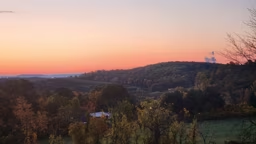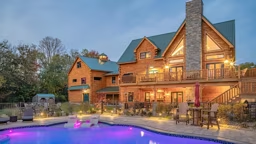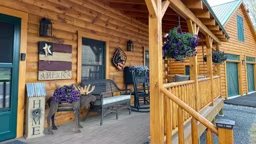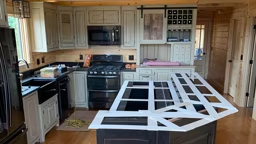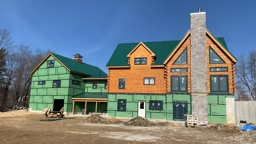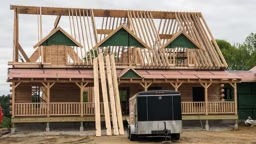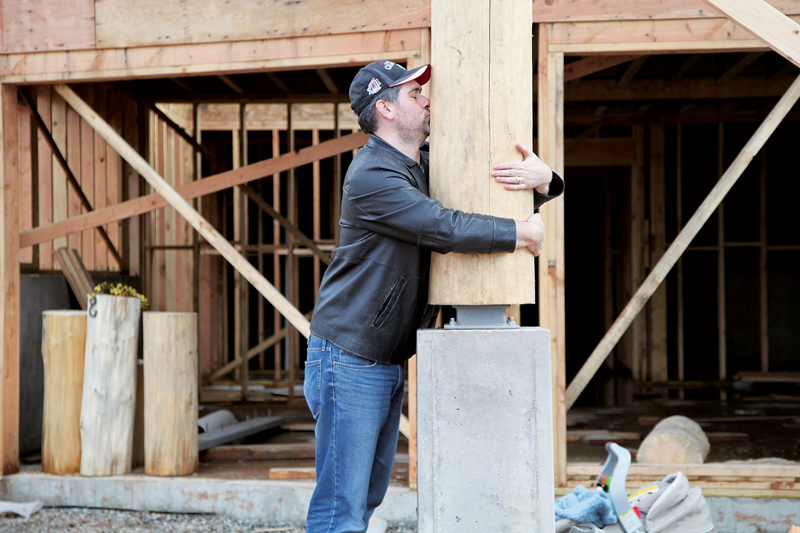
For someone who has dreamt of building and owning a genuine log home, there is no day quite like the day you get your arms around that first installed post. OK, so it’s not like the day your kids came into the world or your wedding day, but it’s a Top 10 event for sure. And for us, that day has finally arrived: It’s delivery and erection day for our New Jersey log home.
 As I’ve mentioned in previous installments of our “Journey,” a successful build starts and ends with good communication and planning, but at no stage of the game is this more important than now.
As I’ve mentioned in previous installments of our “Journey,” a successful build starts and ends with good communication and planning, but at no stage of the game is this more important than now.
While our crew got to work on stick framing the interior walls in the basement and installation of the first-floor Warmboard radiant decking, my general contractor was in constant communication with the folks at Bitterroot Valley Log and Timber (BVLT) to make sure the prep work at the site was being done correctly and that certain log-to-frame connections were clear to all parties.
Sometimes these calls included the building engineer we chose based on recommendations from BVLT. He knew log home construction inside and out and was located near our manufacturer.
This close communication allowed my local framing crew and GC to stand up the first of the log posts that supported the rear deck of the house without needing to wait for the craftsmen from Montana to arrive. We were finally able to see the first wooden sign that our house was about to take shape, and I shamelessly admit I hugged (and kissed) that first log.
Eventually we reached the point where it was time to bring in the experts to erect the log posts and trusses in the main sections of the house. I recall one evening when my GC, the lead framer and I looked up at a section of the frame and were mystified how we’d get the logs to attach the way they were shown on the drawing.
We just kind of looked at each other and said, “Well, guess we’ll leave that to the Log Dog.” 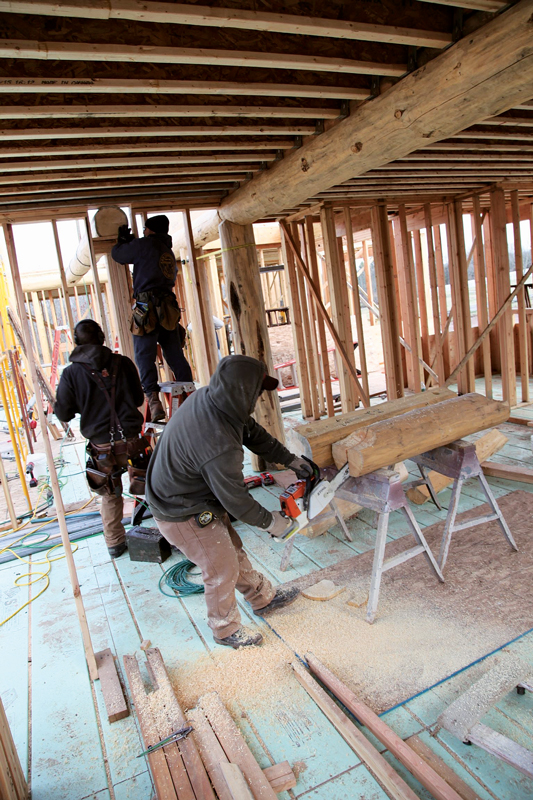 Who is that, you ask? The title is derived from the tool used by log crafters to hold two logs together while they work on them, and it’s become a term of endearment for the artists-in-wood who fine tune a log structure.
Who is that, you ask? The title is derived from the tool used by log crafters to hold two logs together while they work on them, and it’s become a term of endearment for the artists-in-wood who fine tune a log structure.
On our team, the Log Dog is the foreman in charge of the log crafting and assembly, and he did not disappoint. We learned early on that to succeed, it’s vital to let the experts run the team — particularly when it’s time to erect your log package. Egos need to step aside, and everyone needs to listen and do what they say. It’s unbelievable what our Log Dog was able to accomplish on the fly — wielding only a small chainsaw and working on logs that have been pre-cut on the other side of the country and cost tens of thousands of dollars — he made the whole package come together with surgical precision.
I personally believe the money we’ve spent to have our Log Dog on site during erection is highly worthwhile. He brings a wealth of knowledge and experience and allows the local builders to deal with the inevitable surprises that come from working with a natural material like logs.
For example, logs will twist and bend a bit during the period between when they are disassembled at the log fabricator and re-erected at your home site. It’s a natural part of the drying process, as the wood finds its equilibrium with the environment. Some of our logs sat for six to nine months. There are lots of tricks the Log Dog uses to get them to fit together just right.
Bottom line: Take a few days off work and watch the process. For most of us, it’s a once-in-a-lifetime experience that is simply awe inspiring. Our Log Dog spent two weeks with us and, if not for a storm that dropped two feet of snow on our region during his last two days onsite, he would have been totally done.
There was enough completed, however, that we could send him home for a few months while our framing crew and GC finished the remainder of the interior frame, roof sheathing and window installations. All that was left was cosmetic log wrapping (albeit with large-diameter, long logs) around the exposed steel beams in the basement and garage.
I cannot emphasize enough how much I admire what these folks do. Every log is unique, hand-chosen and hewn to fit a specific part of our design. They know how to orient each timber so that its character is on full display. Most of all, they love what they do and it shows. It’s impressive to be able to see a genuine work of art; but to be able to live in one is a true gift. Our family plans to appreciate it every single day.
Sean’s Smart Tip
When working with logs, have your crew plan to leave edge gaps and notches (where possible)for future drywall installation. Also, putting a 3/4-inch thick disc of plywood at the base of the log posts to give yourself room to slide finished flooring underneath without labor-intensive notching or scribing later on can be a big time saver. Review these options with your log fabricator and builder.
Next time, Sean will share how they dealt with some of the challenges that come from building around logs, and how you and your build team need to be open to “out-of-the-box” thinking when it comes to HVAC, plumbing, lighting, siding and roofing.




